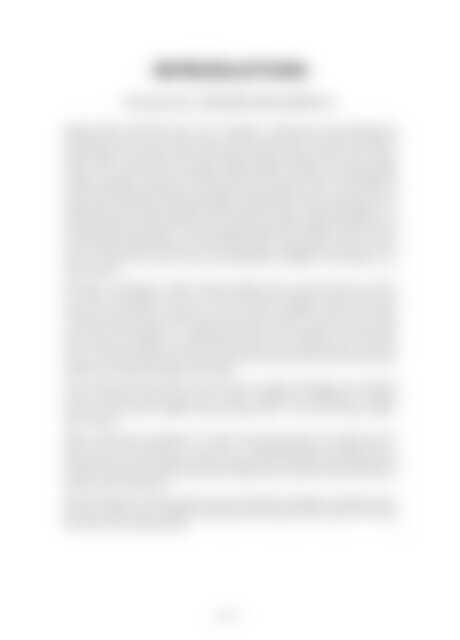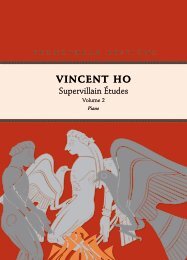Piano Sonatinas (Preview)
by Douglas Lilburn | Piano
by Douglas Lilburn | Piano
You also want an ePaper? Increase the reach of your titles
YUMPU automatically turns print PDFs into web optimized ePapers that Google loves.
INTRODUCTION<br />
DOUGLAS LILBURN BIOGRAPHY<br />
Douglas Lilburn (1915–2001) grew up on ‘Drysdale’, a hill–country farm bordering the<br />
mountainous region at the centre of New Zealand’s North Island. He often described his<br />
boyhood home as ‘paradise’ and his first major orchestral work, Drysdale Overture (1937),<br />
written while a student under the aegis of Ralph Vaughan Williams at the Royal College<br />
of Music in London, conjures up the hills, bush and stream as primal sites of imaginative<br />
wonder. Recalling the impression of Drysdale Overture, Lilburn wrote: ‘I’m left with that<br />
lovely Mark Twain image of Jim and Huckleberry drifting their barge down that great river,<br />
looking up at the stars and wondering “whether they was made, or only just happened.”’ At<br />
this time Lilburn wrote his Festival Overture and the Sonata 1939, together with other works<br />
that expressed national pride: a cantata entitled Prodigal Country (1939), and the Aotearoa<br />
Overture (1940), which has become a New Zealand classic. Although these works were written<br />
in his student years, their content, style and general confidence reveal Lilburn as an<br />
achieved artist.<br />
Returning to Christchurch, Lilburn banded together with an innovative group of painters,<br />
poets and publishers who were to prove influential. Settings of Allen Curnow and<br />
Denis Glover, for instance, resulted in two iconic works: Landfall in Unknown Seas (1942),<br />
a voyage of spiritual discovery for narrator and string orchestra, and the song cycle Sings<br />
Harry (1953), the musings of a middle-aged bachelor who, returning to the mountains<br />
where he grew up, begins to reassess and evaluate the course his life has taken. Two more<br />
works, an orchestral tone poem A Song of Islands (1946) and the Chaconne (1946), find their<br />
parallel in the regional paintings of Rita Angus.<br />
In 1947 Lilburn joined the staff at Victoria University College in Wellington and completed<br />
several works that received high critical acclaim, including two symphonies, two piano<br />
sonatas, and the Alistair Campbell song cycle Elegy (1951) – a vision of the titanic indifference<br />
of nature.<br />
Lilburn composed the Symphony No.3 (1961), along with Sonatina No.2 (1962) and Nine<br />
Short Pieces for <strong>Piano</strong> (1965–66), in response to a stimulating period of sabbatical leave.<br />
Masterpieces of concentrated form, these works explore the boundaries of his instrumental<br />
writing. From this point until his retirement, Lilburn chose to take on the new territory of<br />
electroacoustic composition.<br />
Lilburn’s final years were spent quietly at home in Thorndon, Wellington, tending to his garden<br />
and, until the onset of arthritis, playing his beloved August Förster piano. He received<br />
the Order of New Zealand in 1988.<br />
PEL12 – iv


















